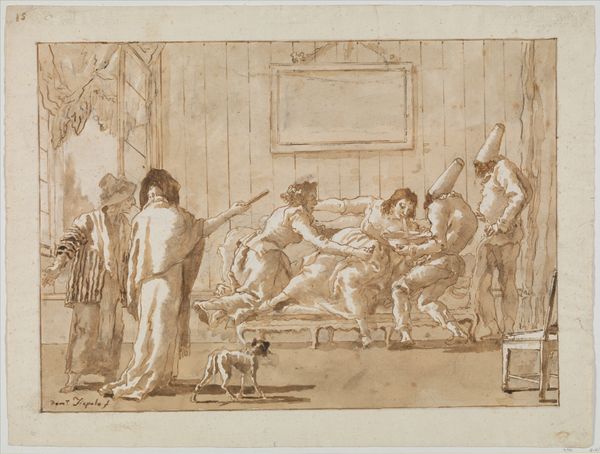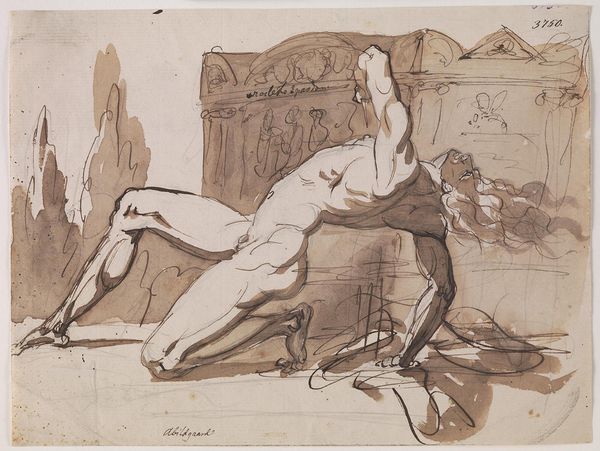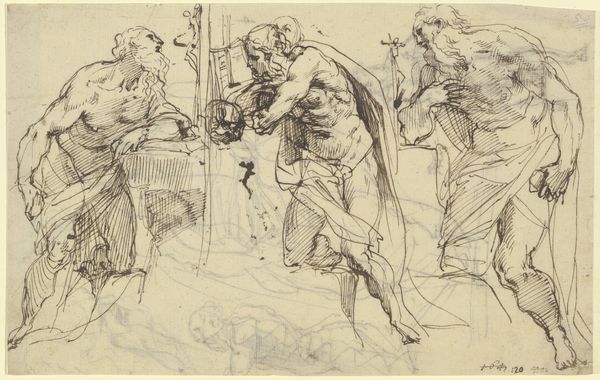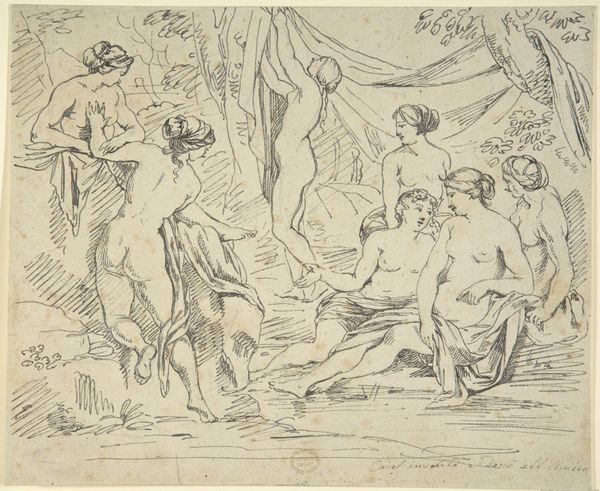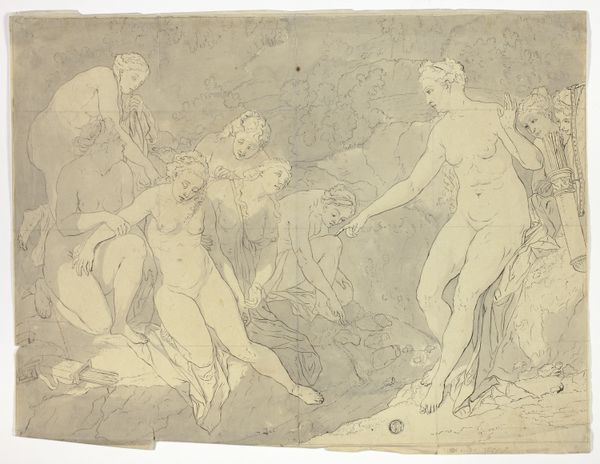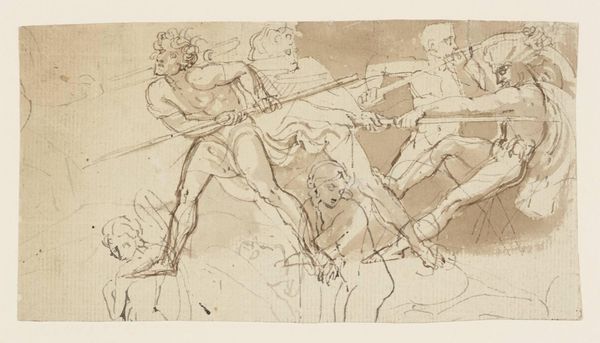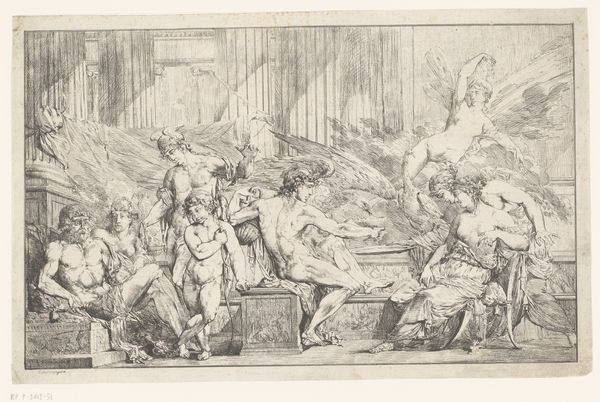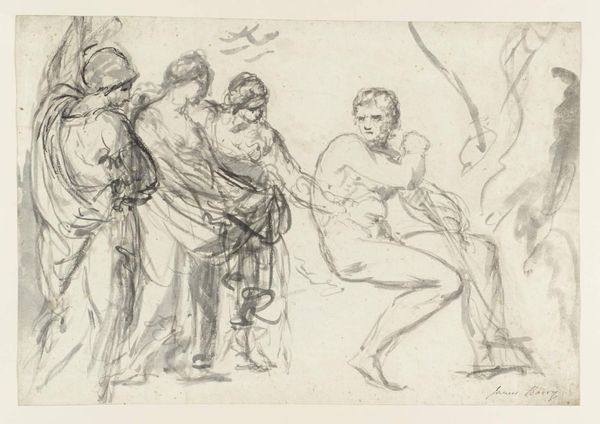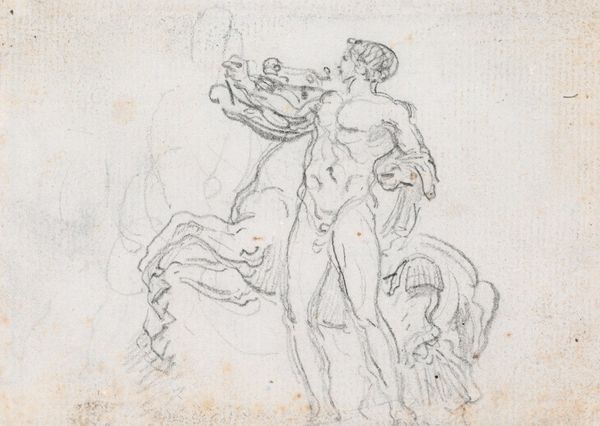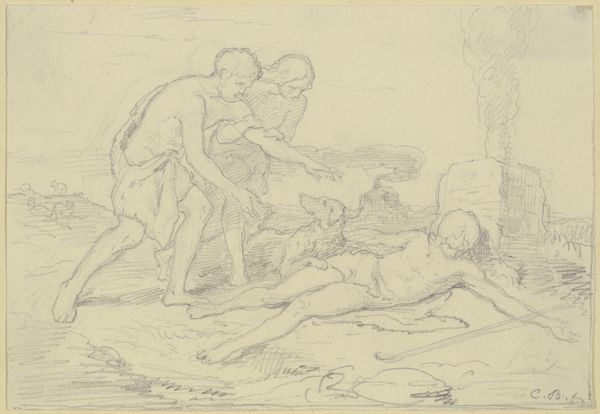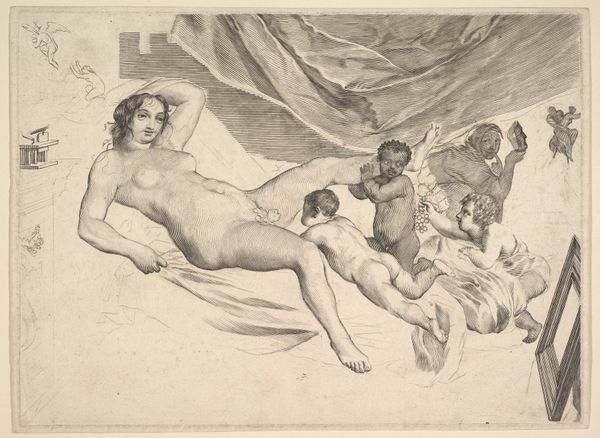
drawing, ink, chalk
#
drawing
#
baroque
#
pencil sketch
#
figuration
#
ink
#
chalk
#
nude
Copyright: Public Domain
Curator: This ink, chalk, and pencil drawing titled "Holy bishop" is attributed to Gaspare Diziani. What are your initial thoughts? Editor: My first thought goes to how this seems less "holy" and more like an ambiguous, even provocative gathering. The nude figures, the suggestive poses... it hints at stories beyond the religious, maybe tales of power, sexuality, and transgression? Curator: Interesting! It's precisely that tension between the sacred and the profane that intrigues me. Diziani masterfully captures a scene that’s open to interpretation. The raw quality of the drawing, the unpolished strokes—they allow the figures to breathe, to exist beyond a rigid narrative. The lines dance and suggest that we should abandon established tropes when seeking our way through the subject’s complexity. Editor: And look at the composition! We have figures that dominate the central space of the work, while some are clearly relegated to secondary importance at the periphery. Who is entitled to enter into discourse? Whose voices are pushed to the margins? I’m particularly interested in the Baroque context...it’s important to remember how deeply hierarchical 18th-century Venetian society was. Diziani’s image subtly disrupts those hierarchies, or at least, renders their fault lines visible. Curator: Absolutely. It’s not just about visual dominance, it is about capturing this liminal space, full of movement. There is potential, becoming and being—like a moment lifted straight from the theatre. Editor: Indeed. Also, while we might not know the specific narrative being depicted, it’s important to consider what a figure like a “holy bishop” signifies historically: authority, law, tradition… And then consider this representation next to bodies that expose and challenge that very authority. It's almost a deliberate conversation, or rather a visual debate. What is sacred? What is profane? Who decides? Curator: Precisely. I think what fascinates me most is how Diziani uses the medium itself—the rough strokes of chalk and ink—to suggest that things aren’t quite settled. There’s a beautiful roughness to it all that invites contemplation. Editor: It really is in these details, in this visible "work in progress", where art challenges assumptions and dares us to reimagine our inherited stories. Curator: Well, I think Diziani encourages us to actively challenge these traditional boundaries. It is in the process that this drawing opens up, prompting viewers to actively shape narratives of the future, based on this intriguing sketch.
Comments
No comments
Be the first to comment and join the conversation on the ultimate creative platform.
